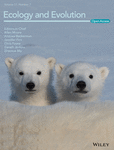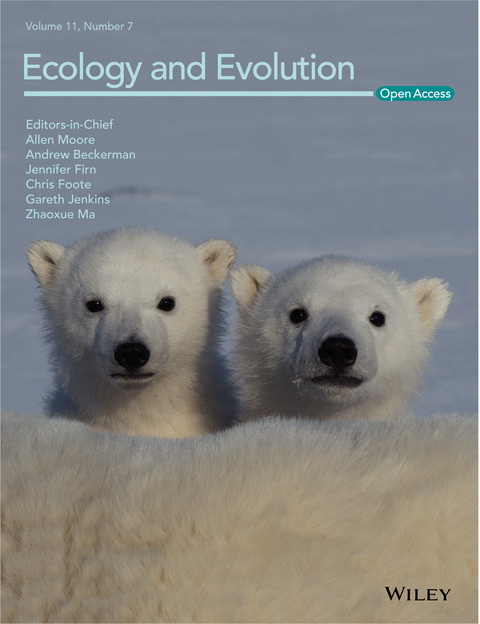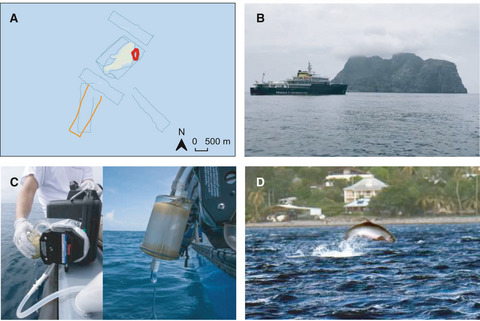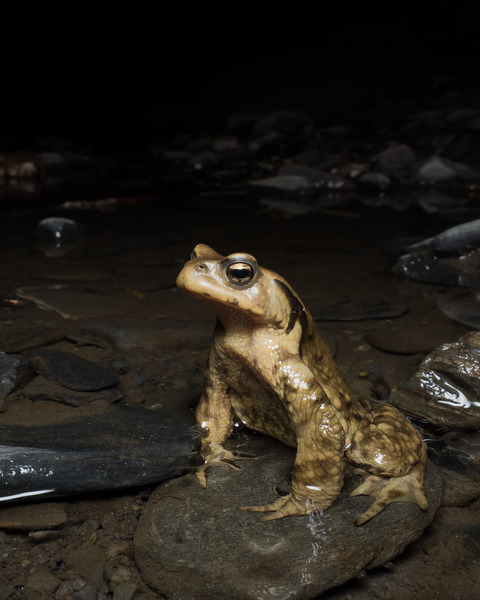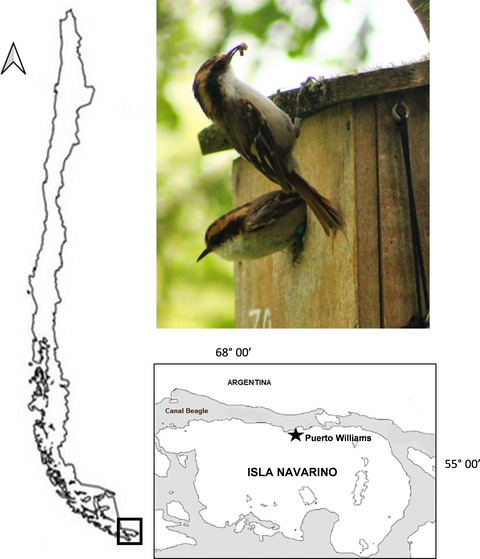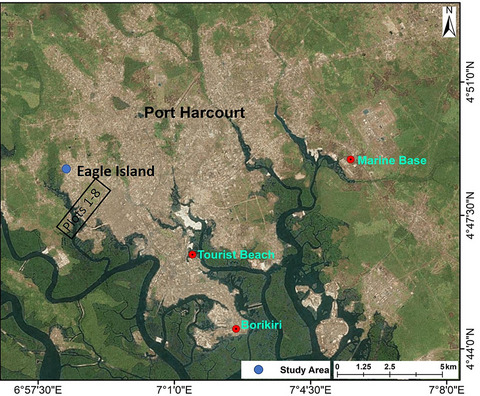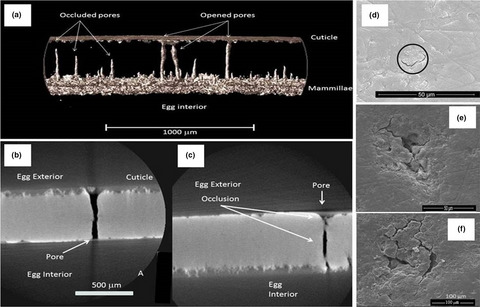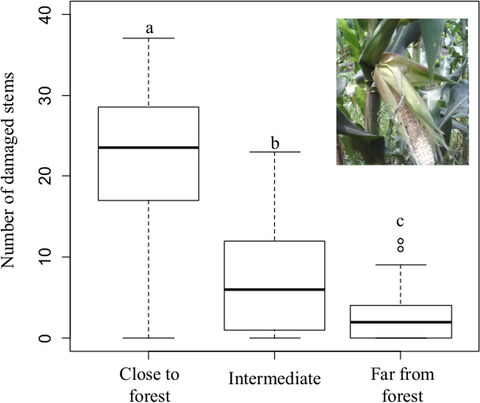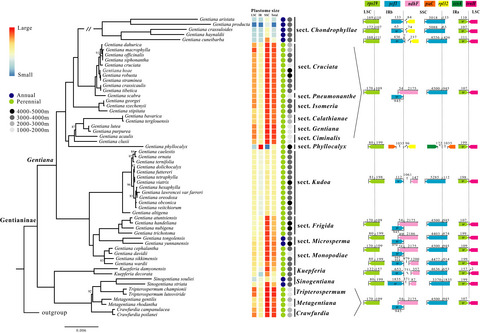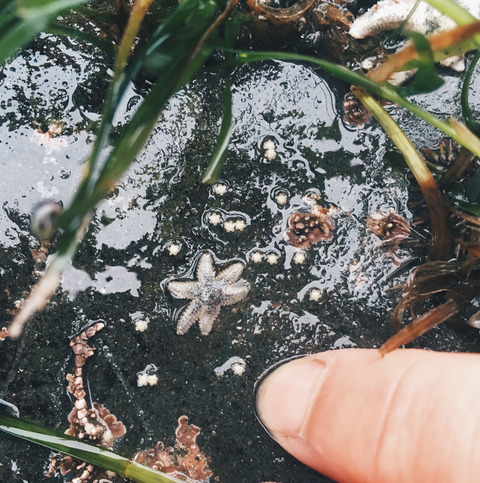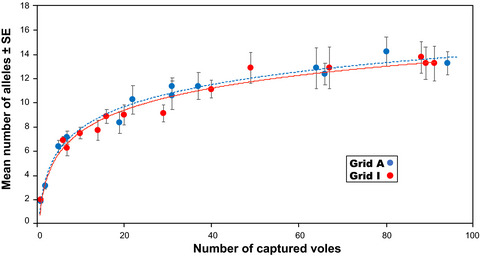Journal list menu
Export Citations
Download PDFs
ISSUE INFORMATION
NATURE NOTES
Detection of the elusive Dwarf sperm whale (Kogia sima) using environmental DNA at Malpelo island (Eastern Pacific, Colombia)
- Pages: 2956-2962
- First Published: 04 March 2021
In situ feeding as a new management tool to conserve orphaned Eurasian lynx (lynx lynx)
- Pages: 2963-2973
- First Published: 02 March 2021
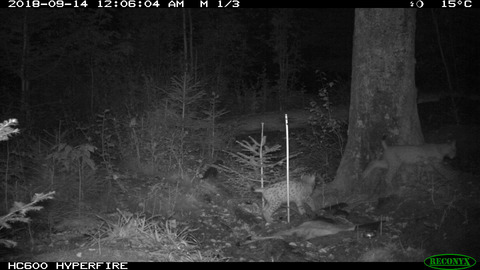
The topic of orphaned juvenile Eurasian lynx is one of growing importance. Given the high rates of human-caused mortality of Eurasian lynx, especially in Central Europe's anthropogenic landscapes, large carnivore managers must frequently deal with orphans. It is necessary to intervene in order to conserve individuals but the options available to managers besides conventional captive rearing have been relatively unexplored. We describe how two juvenile Eurasian lynx became orphaned and could be supported for 5 months to independence age via in situ provisioning of deer carcasses, thus avoiding human contact and captivity. We also confirmed dispersal from the natal range and the success of this method.
REVIEWS
Beyond spider personality: The relationships between behavioral, physiological, and environmental factors
- Pages: 2974-2989
- First Published: 05 March 2021
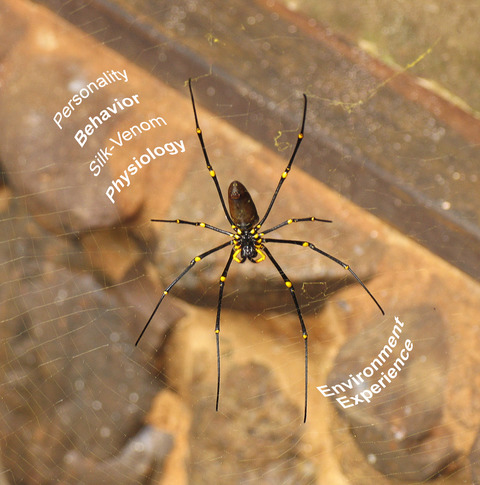
Few studies have explored the mechanisms driving the expression of personality in spiders, and what effects extrinsic and intrinsic factors (and their interactions) have on the expression of personalities. Physiological traits, particularly venom and silk, may play an important role in the expression of personalities and/or behavioral flexibility in spiders
Measuring temporal patterns in ecology: The case of mast seeding
- Pages: 2990-2996
- First Published: 11 March 2021
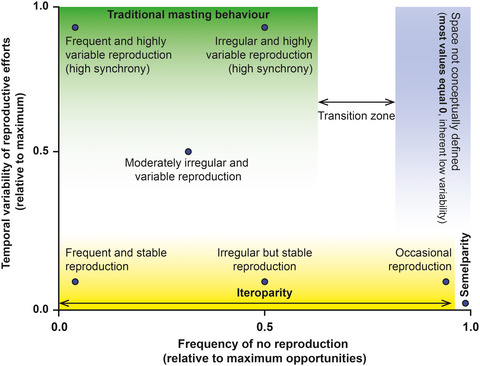
Temporal variability is one of the foundations of masting literature and has been traditionally measured using the coefficient of variation (CV). However, the use of CV is concerning because of several mathematical drawbacks. We here aim to open a debate on what metrics we should use when dealing with temporal variability in seed production and on whether we should redefine the concept of masting or simply avoid it
The influence of competing root symbionts on below-ground plant resource allocation
- Pages: 2997-3003
- First Published: 02 March 2021
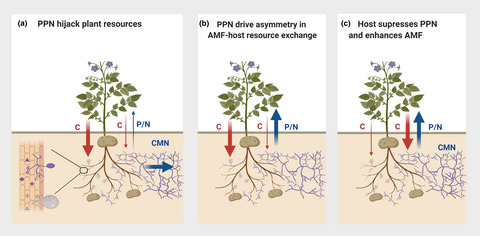
Plants resources must be distributed between contrasting, concurrent symbionts. Here, we review and outline major gaps in knowledge surrounding the allocation of plant resources to two contrasting below-ground root symbionts, the mutualistic arbuscular mycorrhizal fungi, and the parasitic plant parasitic nematodes. Based on recent developments in other symbiotic relationships, we propose hypotheses for the distribution of plant resources between these contrasting below-ground partners and how this may affect the host.
ORIGINAL RESEARCH
A new approach to assessing the space use behavior of macroinvertebrates by automated video tracking
- Pages: 3004-3014
- First Published: 13 March 2021

We developed a video tracking method designed to reliably assess space use behavior among individual aquatic macroinvertebrates.To illustrate the utility of the proposed method, we present a case study regarding the size dependency of space and resource use behavior in Gammarus insensibilis, focusing on individual's patch selection, giving-up time, and cumulative space used .We observed the negative size dependency of individual giving-up time, showing that patch departure occurred sooner in larger individuals than smaller ones and that individual cumulative space used scaled positively with body size.
Brain size variation along altitudinal gradients in the Asiatic Toad (Bufo gargarizans)
- Pages: 3015-3027
- First Published: 26 January 2021
How citizen science could improve species distribution models and their independent assessment
- Pages: 3028-3039
- First Published: 10 March 2021
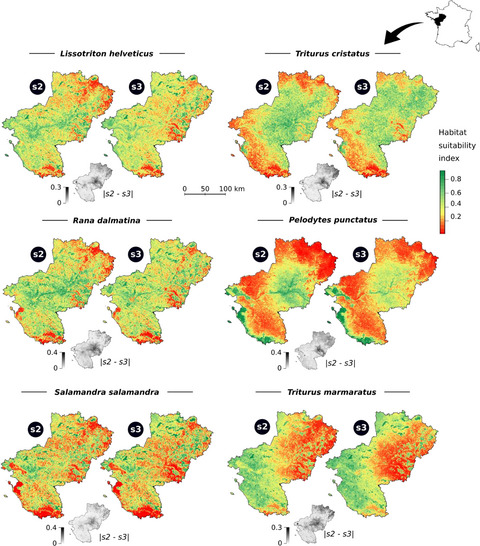
To develop new scientific and participatory approaches might better integrate biodiversity issues into decision-making processes. In this study, we used different datasets to establish and assess habitat suitability maps for 9 species of amphibian in France. We compared different SDM as well as the effect of integrating parameters relating to sampling effort. We assessed the models’ performance by (1) internal cross-validation or (2) external validation using an independent dataset from citizen science monitoring strategically completed. The AUC values obtained with cross-validation were much higher for all species than with external evaluation and models integrating sampling effort performed better with external validation methods. Data from citizen science may help to get valuable external dataset to the assessment of SDM.
Investigating the morphological and genetic divergence of arctic char (Salvelinus alpinus) populations in lakes of arctic Alaska
- Pages: 3040-3057
- First Published: 05 March 2021
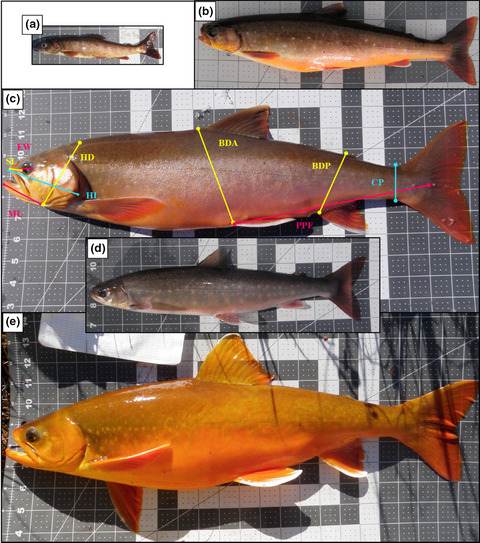
In this study, we described the morphological and genetic diversity of seven populations of arctic char with varying length-frequency distributions across two distinct groups of lakes in northern Alaska. Although some lakes exhibit multimodal size distributions, using model-based clustering of morphometric traits corrected for allometry, we did not detect morphological differences within and across char populations. Genetic analyses demonstrated differences among lake groups, but within lake groups and within individual lakes, genetic differentiation was not related to total body length.
Tail autotomy works as a pre-capture defense by deflecting attacks
- Pages: 3058-3064
- First Published: 04 March 2021
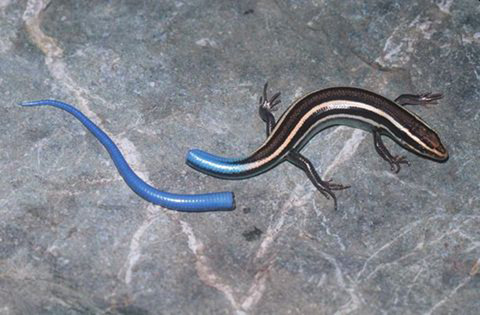
In an experiment on domestic dogs chasing model prey, we found that attacks were directed to an autotomized body parts when it was conspicuously colored but not when it was longer. This supports the hypothesis that autotomy is principally effective because of perceptual deflection of attacks rather than because it offers predators a “consolation prize” meal.
Female extra-pair behavior is not associated with reduced paternal care in Thorn-tailed Rayadito
- Pages: 3065-3071
- First Published: 06 March 2021
Natural variation in colony inbreeding does not influence susceptibility to a fungal pathogen in a termite
- Pages: 3072-3083
- First Published: 10 March 2021

Reduced genetic diversity through inbreeding can negatively affect pathogen resistance. We investigated this hypothesis in termites by testing whether the level of inbreeding within a colony affected the survival of workers challenged with two fungal pathogens. We found a bimodal distribution of colony survival, whereby colonies exhibit either high or low susceptibility. However, this difference was not explained by the level of inbreeding within the colony, suggesting that colony immunity may rely more on a specific genetic background, rather than its overall genetic diversity.
Environmental conditions but not nest composition affect reproductive success in an urban bird
- Pages: 3084-3092
- First Published: 12 March 2021
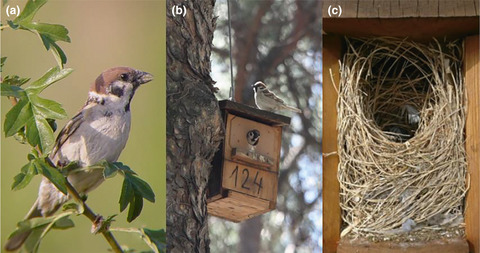
Adjusting the composition of their nests, birds can influence the environmental conditions that eggs and offspring experience. We combined data on weather conditions and nest composition to investigate their relative contribution to reproductive success of the Eurasian tree sparrow (Passer montanus). Our results suggest that, despite considerable variation in nest composition, the use of feathers in nests is not particularly beneficial to mitigate negative rainfall effects on the reproductive success of tree sparrows.
Microstructural characteristics of the stony coral genus Acropora useful to coral reef paleoecology and modern conservation
- Pages: 3093-3109
- First Published: 09 March 2021
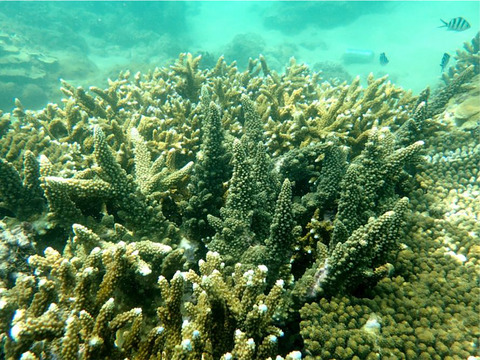
Identification of fossil corals is often limited due to poor preservation of external skeleton morphology, especially in the genus Acropora which is widespread across the Indo-Pacific. Based on skeleton characteristics from thin section, we here develop a link between the internal skeleton structure and external morphology.
Spatial patterns of leaf δ13C and δ15N of aquatic macrophytes in the arid zone of northwestern China
- Pages: 3110-3119
- First Published: 16 February 2021
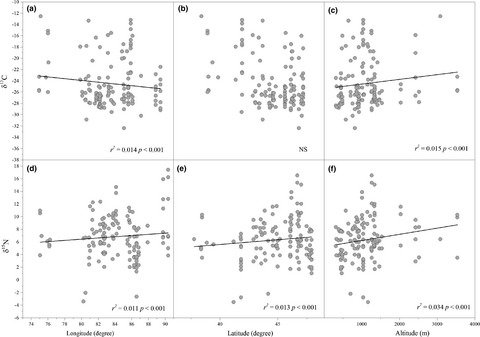
We investigated the relationships between climate and environmental factors and plant leaf δ13C and δ15N in the arid zone of northwest China. We speculated that water-relation factors are the leaf δ13C determinant of macrophytes in the arid zone of northwestern China, and the main factors affecting leaf δ15N values are the complex combination of water and energy factors.
A geographical perspective on the relationship between Impatiens spur lengths and bill lengths of sunbirds in Afrotropical mountains
- Pages: 3120-3129
- First Published: 10 February 2021
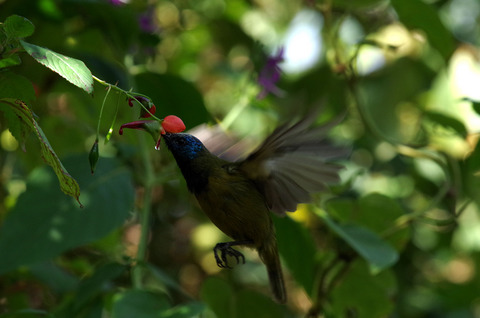
We focused on matching between spur lengths of the genus Impatiens and bill lengths of sunbirds in tropical Africa. For 25 mountain and island locations, we compiled information about the composition and traits of local Impatiens and sunbird assemblages. We found that assemblage mean and maximum values of bill lengths were positively correlated with mean and maximum spur lengths across locations.
Seasonality of floral resources in relation to bee activity in agroecosystems
- Pages: 3130-3147
- First Published: 28 February 2021

If wild bee populations are to persist in agricultural landscapes, there must be sufficient floral resources over time and space. We ask whether the spatial and within-season temporal availability of floral resources can predict bee activity in agricultural landscapes. We found that visits from sweat bees, mining bees, and bumble bees were best predicted by the amount of floral resources available previously in the season, while visits from leafcutter bees were best predicted by the current availability of floral resources.
Natural seedling recruitment and regeneration in deforested and sand-filled Mangrove forest at Eagle Island, Niger Delta, Nigeria
- Pages: 3148-3158
- First Published: 25 February 2021
Integrating omics to characterize eco-physiological adaptations: How moose diet and metabolism differ across biogeographic zones
- Pages: 3159-3183
- First Published: 04 March 2021
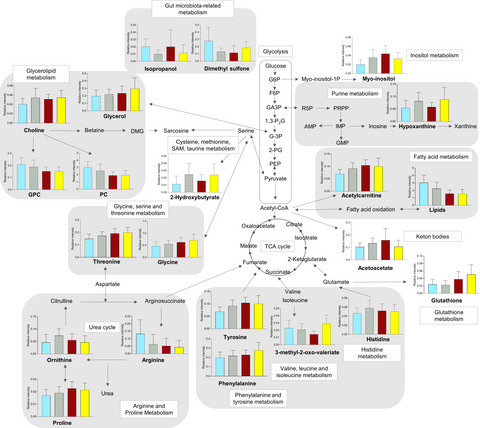
With accelerated land conversion and global heating at northern latitudes, it becomes crucial to understand, how life histories of animals in extreme environments adapt to these changes. By integrating omics, we characterize eco-physiological adaptations that show how moose diet and metabolism differ across three biogeographic zones. The biomarkers identified in this study pave the way for future scenario building for animal adaptive capacity.
The eggshell structure in apteryx; form, function, and adaptation
- Pages: 3184-3202
- First Published: 26 February 2021
Pattern of crop raiding by wild large mammals and the resultant impacts vary with distances from forests in Southwest Ethiopia
- Pages: 3203-3209
- First Published: 14 February 2021
3D genital shape complexity in female marine mammals
- Pages: 3210-3218
- First Published: 15 February 2021
Can current farmland landscapes feed declining steppe birds? Evaluating arthropod abundance for the endangered little bustard (Tetrax tetrax) in cereal farmland during the chick-rearing period: Variations between habitats and localities
- Pages: 3219-3238
- First Published: 02 March 2021

We compare invertebrate abundance, biomass, and richness in four different habitats in areas used and not used by little bustards (Tetrax tetrax) and across three sites of different farming intensity. Results highlight that traditional farmland management aimed at bird conservation leads to higher food availability and that little bustards favor those areas.
Current and time-lagged effects of climate on innate immunity in two sympatric snake species
- Pages: 3239-3250
- First Published: 16 February 2021
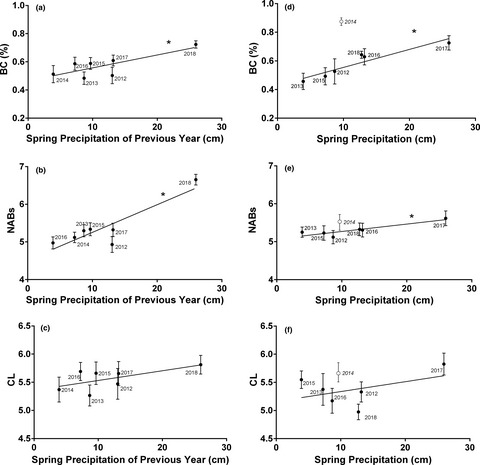
We present seven years of data on four populations of two sympatric species of garter snake to test for effects of climate on three indices of innate immunity. We found that precipitation is significantly related to immunity in both species, with an important difference: precipitation of the previous year is related to immunity for one species, whereas precipitation of the current year is most important for the other. Thus, this study is the first to show a time-lagged effect of climate on immune function in the wild and constitutes a powerful example of interspecific differences in response to environmental change even in closely related sympatric species
Temporal patterns in the social network of core units in Rwenzori Angolan colobus monkeys: Effects of food availability and interunit dispersal
- Pages: 3251-3263
- First Published: 05 March 2021
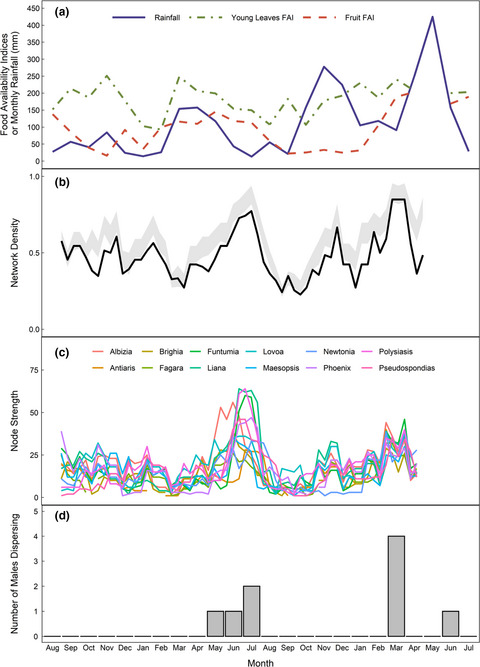
Core units in a multi-level society of Rwenzori Angolan colobus monkeys show temporal variation in association that corresponds to food availability. Units are more clustered when fruit is abundant and interunit dispersal by males also peaks at this time, suggesting that the seasonal pattern of band cohesion allowed males to prospect for dispersal opportunities. Our findings highlight how ecological conditions can influence association patterns, interunit relationships, and ultimately social organization.
“Micropersonality” traits and their implications for behavioral and movement ecology research
- Pages: 3264-3273
- First Published: 22 February 2021
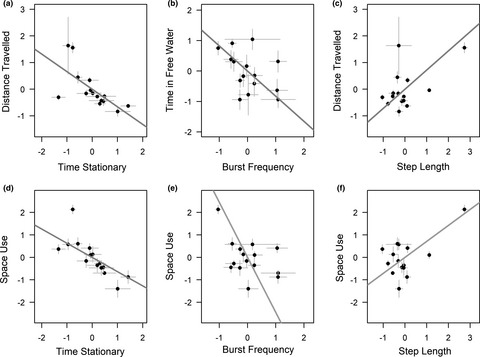
We use high-resolution tracking data of three-spined stickleback fish (Gasterosteus aculeatus) to examine the repeatability of movement parameters commonly used in the analysis of discrete time series movement data and behavioral parameters commonly used in animal personality studies. We show that movement and behavioral parameters are broadly equivalent, capturing similar interindividual variation. We suggest that movement parameters can be viewed as “micropersonality” traits that give rise to broad-scale consistent interindividual differences in behavior.
How environmental stressors affect reproductive potential in a saltmarsh plant species Plantago maritima
- Pages: 3274-3285
- First Published: 06 March 2021
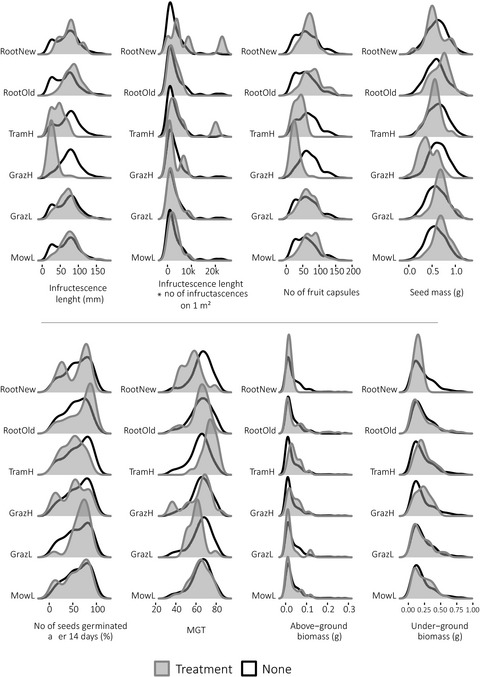
In the case of habitats created anthropogenically, such as brackish saltmarshes, the role of management is crucial for their conservation. Therefore, searching for the best active protection methods is important. In light of the results obtained, extensive or rotational grazing appears to be the best form of saltmarsh management
Lineage-specific plastid degradation in subtribe Gentianinae (Gentianaceae)
- Pages: 3286-3299
- First Published: 22 February 2021
Fertile Crescent crop progenitors gained a competitive advantage from large seedlings
- Pages: 3300-3312
- First Published: 04 March 2021
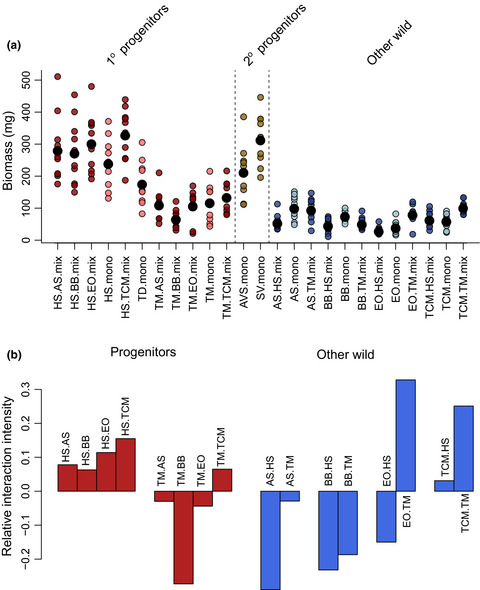
Using controlled-setting experiments, we studied how the domestication of cereal species in the Fertile Crescent was influenced by the role of seedling competition in species mixtures. Crop progenitors had greater germination success and had greater aboveground biomass than other wild species when grown in competition with other species, and seed size was positively correlated with a number of traits. We provide evidence that the seedlings of cereal crop progenitors have traits that make them better competitors and that interactions with seed size show how they may have amplified their advantage over other wild species during the origins of agriculture.
Temporal and spatial variation in population structure among brooding sea stars in the genus Leptasterias
- Pages: 3313-3331
- First Published: 04 March 2021
Climate and habitat configuration limit range expansion and patterns of dispersal in a non-native lizard
- Pages: 3332-3346
- First Published: 22 February 2021
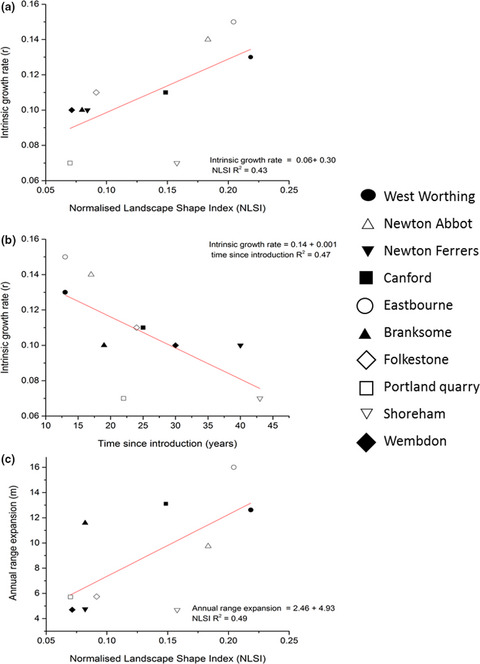
We investigated the potential for population growth and range expansion of introduced populations of a non-native lizard (Podarcis muralis), considering multi-scale factors influencing growth, and spatial spread. National-scale models indicated climate suitability restricted to the southern parts of the UK, limited by a latitudinal cline in overwintering conditions. Patterns of local population growth and range expansion were related to differences in local landscape configuration and heterogeneity. The broad habitat niche of P. muralis, coupled with configuration of habitat patches in the landscape, allows populations to increase locally with minimal dispersal
Biogeographic position and body size jointly set lower thermal limits of wandering spiders
- Pages: 3347-3356
- First Published: 05 March 2021
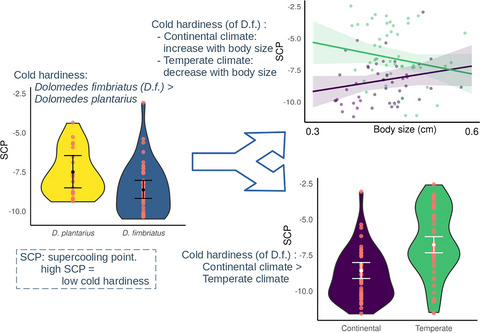
Climate varies along clinal gradients and influences phenotypic plasticity, local adaptations, and associated physiological responses of most terrestrial ectotherms. We investigated and compared the cold tolerance of fishing spiders from contrasting climate. We found a higher cold resistance in Dolomedes fimbriatus from northern populations than southern populations. We also found that the red-listed Dolomedes plantarius was less cold resistant, which might put the species at risk in the future because its overwintering habitats may be colder.
Trait means or variance—What determines plant species' local and regional occurrence in fragmented dry grasslands?
- Pages: 3357-3365
- First Published: 10 March 2021
Temperature but not ocean acidification affects energy metabolism and enzyme activities in the blue mussel, Mytilus edulis
- Pages: 3366-3379
- First Published: 05 March 2021
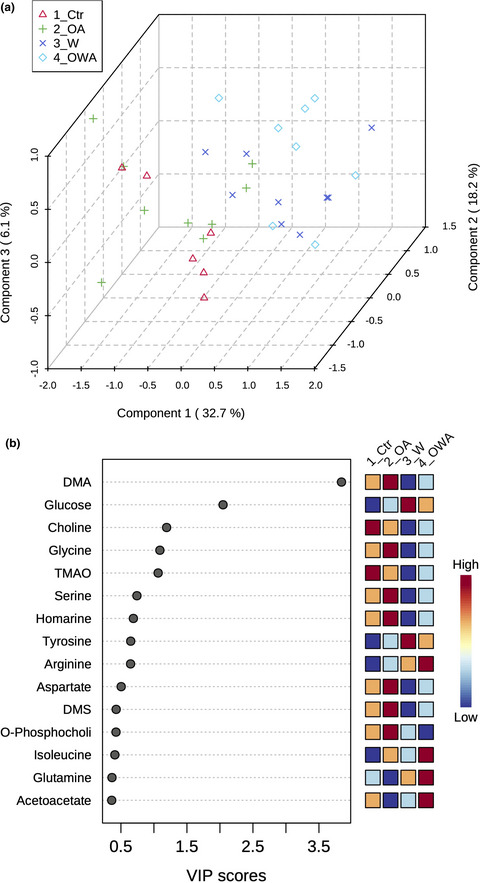
Our study demonstrates that adult Mytilus edulis from Gulf of Maine, one of the hot spots for global climate change, are metabolically resilient to the moderate acidification scenarios for the next 100–300 years but responsive to warming as seen in changes in metabolic rate, energy reserves, metabolite profiles, and enzyme activities.
Modeling the demography of species providing extended parental care: A capture–recapture multievent model with a case study on polar bears (Ursus maritimus)
- Pages: 3380-3392
- First Published: 10 March 2021
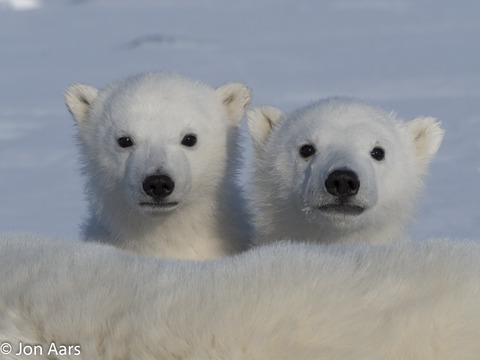
We developed a capture–recapture model for studying the demography of species providing extended parental care. Our model handles statistical dependency among individual demographic parameters and life histories within family units until offspring independence, and include variable litter size, age at offspring independence and breeding frequency. It also includes the influence of past reproductive history on the caring parent's survival status and current reproduction, while accounting for imperfect detection of family units. We assess the model performances using simulated data, and illustrate its use with a long-term dataset collected on the Svalbard polar bears (Ursus maritimus).
Flexibility in Red Sea Tridacna maxima-Symbiodiniaceae associations supports environmental niche adaptation
- Pages: 3393-3406
- First Published: 11 March 2021
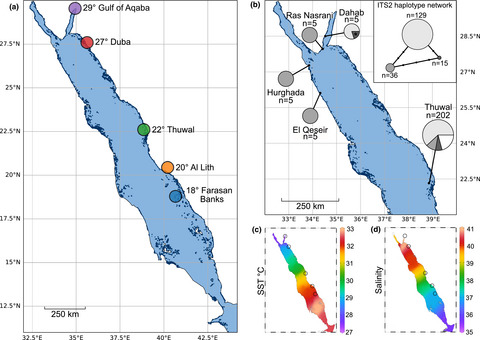
Here we demonstrate site- and region-specific structuring of giant clam-Symbiodiniaceae associations across 10° of latitude in the Red Sea. This structuring indicates a flexibility in clam-algal associations that may explain their high environmental plasticity and offer a strategy for niche adaptation.
Role of individual dispersal in genetic resilience in fluctuating populations of the gray-sided vole Myodes rufocanus
- Pages: 3407-3421
- First Published: 21 February 2021
Vital rates of two small populations of brown bears in Canada and range-wide relationship between population size and trend
- Pages: 3422-3434
- First Published: 10 March 2021
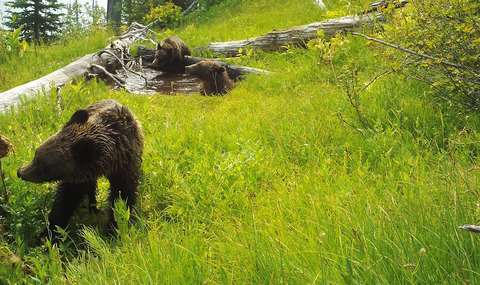
This research investigates population dynamics in two adjacent but genetically and geographically distinct, threatened brown bear (Ursus arctos) populations in southwestern British Columbia, Canada, following the caseation of hunting in that area. Differences in independent female and cub survival between the populations resulted in population increase in the larger, partially connected population, and population decrease in the smaller, isolated population. We suggest that when populations are small and isolated, population growth is rare and, even with intensive management, becomes prohibitive for population recovery.
Bigger is not always better: Viability selection on body mass varies across life stages in a hibernating mammal
- Pages: 3435-3445
- First Published: 09 March 2021
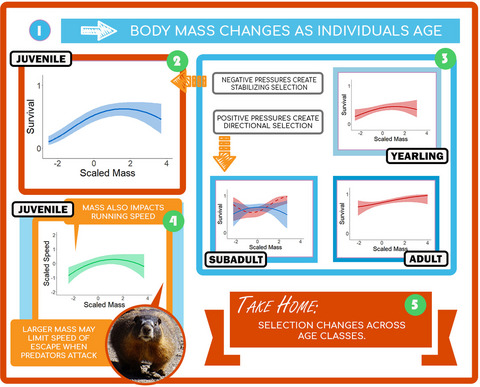
Age-specific links between body mass and survival are rarely taken into account in selection analyses. In our study, we show how selection on body mass changes with age in a hibernating mammal, yellow-bellied marmots (Marmota flaviventer), from stabilizing selection at young ages to directional at older. We also show that predation on young individuals may provide a mechanism by which selection acts by quantifying the relationship between maximum running speed and body mass at all ages




